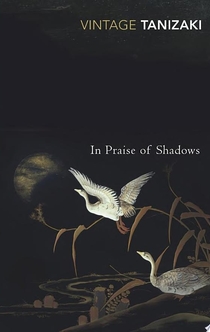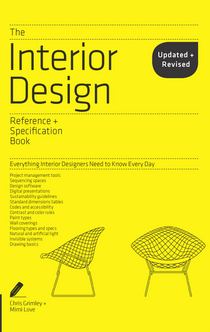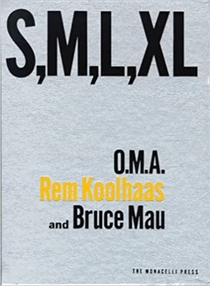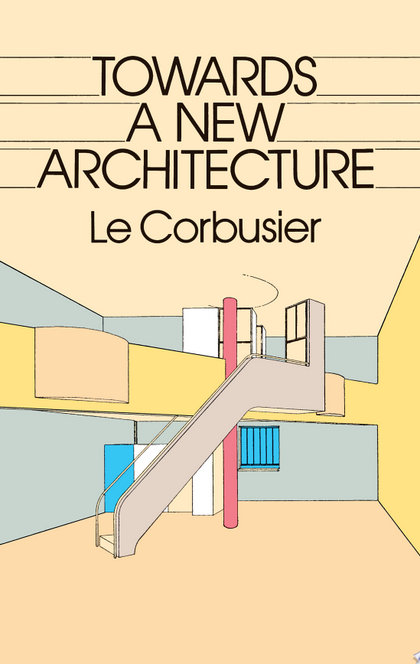
The Eyes of the Skin
First published in 1996, The Eyes of the Skin has become a classic of architectural theory. It asks the far-reaching question why, when there are five senses, has one single sense – sight – become so predominant in architectural culture and design? With the ascendancy of the digital and the all-pervasive use of the image electronically, it is a subject that has become all the more pressing and topical since the first edition’s publication in the mid-1990s. Juhani Pallasmaa argues that the suppression of the other four sensory realms has led to the overall impoverishment of our built environment, often diminishing the emphasis on the spatial experience of a building and architecture’s ability to inspire, engage and be wholly life enhancing. For every student studying Pallasmaa’s classic text for the first time, The Eyes of the Skin is a revelation. It compellingly provides a totally fresh insight into architectural culture. This third edition meets readers’ desire for a further understanding of the context of Pallasmaa’s thinking by providing a new essay by architectural author and educator Peter MacKeith. This text combines both a biographical portrait of Pallasmaa and an outline of his architectural thinking, its origins and its relationship to the wider context of Nordic and European thought, past and present. The focus of the essay is on the fundamental humanity, insight and sensitivity of Pallasmaa’s approach to architecture, bringing him closer to the reader. This is illustrated by Pallasmaa’s sketches and photographs of his own work. The new edition also provides a foreword by the internationally renowned architect Steven Holl and a revised introduction by Pallasmaa himself.
See all

In Praise of Shadows
A fully illustrated, beautifully produced edition of Junichiro Tanizaki's wise and evocative essay on Japanese culture. ‘We find beauty not in the thing itself but in the patterns of shadows, the light and the darkness, that one thing against another creates... Were it not for shadows, there would be no beauty.’ This book is in fact a portal. Reading it, you will be led by Junichiro Tanizaki’s light touch into a mysterious and tranquil world of darkness and shadows, where gold flashes in the gloom and a deep stillness reigns. If you are accustomed to equate light with clarity, the faded with the worthless and the dim with the dreary, prepare for a courteous but powerful realignment of your ideas. In Praise of Shadows is a poetic paean to traditional Japanese aesthetics – in a free-ranging style that moves from architecture to No theatre, and from cookery to lighting, Tanizaki teaches us to see the beauty in tarnished metal, the sombre dignity in unglazed pottery, the primacy of organic materials that bear witness to the regular touch of human hands. It is also astonishingly prescient, offering a gentle warning against the quest for airbrushed perfection, and reminding us that too much light can pollute and obscure our natural world. In this special edition, the text is accompanied by specially selected images to complement Tanizaki’s reflections and further illustrate the pattern and beauty of shadows.
See all

The Interior Design Reference & Specification Book Updated & Revised
This updated and revised edition of The Interior Design Reference & Specification Book gives you the information essential to planning and executing interior projects of all shapes and sizes in a format that is as easy to use as it is to carry--now including interviews with top practitioners from across the field of interior design. With detailed charts, specifications, diagrams, and digital information for planning and executing projects of every scale, this accessible reference explores these vital design topics: Fundamentals: Provides a step-by-step overview of an interior project, describing the scope of professional services, the project schedule, and the design and presentation tools used by designers.Space: Examines ways of composing rooms as spatial environments while speaking to functional and life-safety concerns.Surface: Identifies options in color, material, texture, and pattern, while addressing maintenance and performance issues.Environments: Looks at aspects of interior design that help create a specific mood or character, such as natural and artificial lighting, sound, and smell.Elements: Describes the selection and specification of furniture and fixtures, as well as other components essential to an interior environment, such as artwork and accessories.Resources: Gathers a wealth of useful data, from sustainability guidelines to online sources for interiors-related research.The Interior Design Reference & Specification Book is an essential sourcebook for designers, students of design, and anyone undertaking an interior design project. The Reference & Specification Book series from Rockport Publishers offers students and practicing professionals in a range of creative industries must-have information in their area of specialty in an up-to-date, concise handbook.
See all

The Architecture Reference & Specification Book Updated & Revised
The updated and revised edition of The Architecture Reference & Specification Bookcontains vital information that's essential to planning and executing architectural projects of all shapes and sizes, all in a format that is small enough to carry anywhere. Most architectural standards references contain thousands of pages of details, overwhelmingly more than architects need to know on any given day. In contrast, The Architecture Reference & Specification Book updated & revised distills the data provided in standard architectural volumes in an easy-to-use reference covering the most indispensable--and most requested--types of architectural information. The Reference & Specification Book series from Rockport Publishers offers students and practicing professionals in a range of creative industries must-have information in their area of specialty in an up-to-date, concise handbook.
See all

A Pattern Language
You can use this book to design a house for yourself with your family; you can use it to work with your neighbors to improve your town and neighborhood; you can use it to design an office, or a workshop, or a public building. And you can use it to guide you in the actual process of construction. After a ten-year silence, Christopher Alexander and his colleagues at the Center for Environmental Structure are now publishing a major statement in the form of three books which will, in their words, "lay the basis for an entirely new approach to architecture, building and planning, which will we hope replace existing ideas and practices entirely." The three books areThe Timeless Way of Building, The Oregon Experiment, and this book,A Pattern Language. At the core of these books is the idea that people should design for themselves their own houses, streets, and communities. This idea may be radical (it implies a radical transformation of the architectural profession) but it comes simply from the observation that most of the wonderful places of the world were not made by architects but by the people.At the core of the books, too, is the point that in designing their environments people always rely on certain "languages," which, like the languages we speak, allow them to articulate and communicate an infinite variety of designs within a forma system which gives them coherence. This book provides a language of this kind. It will enable a person to make a design for almost any kind of building, or any part of the built environment."Patterns," the units of this language, are answers to design problems (How high should a window sill be? How many stories should a building have? How much space in a neighborhood should be devoted to grass and trees?). More than 250 of the patterns in this pattern language are given: each consists of a problem statement, a discussion of the problem with an illustration, and a solution. As the authors say in their introduction, many of the patterns are archetypal, so deeply rooted in the nature of things that it seemly likely that they will be a part of human nature, and human action, as much in five hundred years as they are today.
See all

Small, Medium, Large, Extra-large
Essays, projekter, dagbøger, rejseberetninger og eventyrfortællinger fra tyve års virksomhed i Office for Metropolitan Architecture, ordnet som en encyklopædi

Design Like You Give a Damn
Design Like You Give a Damn is the indispensable handbook for anyone committed to building a more sustainable future. Following the success of their first book, Architecture for Humanity brings readers the next edition, with more than 100 projects from around the world. Packed with practical and ingenious design solutions, this book addresses the need for basic shelter, housing, education, health care, clean water, and renewable energy. One-on-one interviews and provocative case studies demonstrate how innovative design is reimagining community and uplifting lives. From building-material innovations such as smog-eating concrete to innovative public policy that is repainting Brazil’s urban slums, Design Like You Give a Damn [2] serves as a how-to guide for anyone seeking to build change from the ground up.Praise for Design Like You Give a Damn [2]: “The resourcefulness of the projects in the book is inspiring, its information practical (see Stohr’s chapter on financing sustainable community development) and its numerous factoids sobering.” —TMagazine.blogs.NYTimes.com
See all

Architecture
A superb visual reference to the principles of architecture Now including interactive CD-ROM! For more than thirty years, the beautifully illustrated Architecture: Form, Space, and Order has been the classic introduction to the basic vocabulary of architectural design. The updated Third Edition features expanded sections on circulation, light, views, and site context, along with new considerations of environmental factors, building codes, and contemporary examples of form, space, and order. This classic visual reference helps both students and practicing architects understand the basic vocabulary of architectural design by examining how form and space are ordered in the built environment.? Using his trademark meticulous drawing, Professor Ching shows the relationship between fundamental elements of architecture through the ages and across cultural boundaries. By looking at these seminal ideas, Architecture: Form, Space, and Order encourages the reader to look critically at the built environment and promotes a more evocative understanding of architecture. In addition to updates to content and many of the illustrations, this new edition includes a companion CD-ROM that brings the book's architectural concepts to life through three-dimensional models and animations created by Professor Ching.
See all

101 Things I Learned in Architecture School
Concise lessons in design, drawing, the creative process, and presentation, from the basics of “How to Draw a Line” to the complexities of color theory.This is a book that students of architecture will want to keep in the studio and in their backpacks. It is also a book they may want to keep out of view of their professors, for it expresses in clear and simple language things that tend to be murky and abstruse in the classroom. These 101 concise lessons in design, drawing, the creative process, and presentation—from the basics of "How to Draw a Line" to the complexities of color theory—provide a much-needed primer in architectural literacy, making concrete what too often is left nebulous or open-ended in the architecture curriculum. Each lesson utilizes a two-page format, with a brief explanation and an illustration that can range from diagrammatic to whimsical. The lesson on "How to Draw a Line" is illustrated by examples of good and bad lines; a lesson on the dangers of awkward floor level changes shows the television actor Dick Van Dyke in the midst of a pratfall; a discussion of the proportional differences between traditional and modern buildings features a drawing of a building split neatly in half between the two. Written by an architect and instructor who remembers well the fog of his own student days, 101 Things I Learned in Architecture School provides valuable guideposts for navigating the design studio and other classes in the architecture curriculum. Architecture graduates—from young designers to experienced practitioners—will turn to the book as well, for inspiration and a guide back to basics when solving a complex design problem.
See all

Towards a New Architecture
For the Swiss-born architect and city planner Le Corbusier (Charles-Édouard Jeanneret, 1887–1965), architecture constituted a noble art, an exalted calling in which the architect combined plastic invention, intellectual speculation, and higher mathematics to go beyond mere utilitarian needs, beyond "style," to achieve a pure creation of the spirit which established "emotional relationships by means of raw materials." The first major exposition of his ideas appeared in Vers une Architecture (1923), a compilation of articles originally written by Le Corbusier for his own avant-garde magazine, L'Esprit Nouveau. The present volume is an unabridged English translation of the 13th French edition of that historic manifesto, in which Le Corbusier expounded his technical and aesthetic theories, views on industry, economics, relation of form to function, the "mass-production spirit," and much else. A principal prophet of the "modern" movement in architecture, and a near-legendary figure of the "International School," he designed some of the twentieth century's most memorable buildings: Chapel at Ronchamp; Swiss dormitory at the Cité Universitaire, Paris; Unité d'Habitation, Marseilles; and many more.Le Corbusier brought great passion and intelligence to these essays, which present his ideas in a concise, pithy style, studded with epigrammatic, often provocative, observations: "American engineers overwhelm with their calculations our expiring architecture." "Architecture is stifled by custom. It is the only profession in which progress is not considered necessary." "A cathedral is not very beautiful . . ." and "Rome is the damnation of the half-educated. To send architectural students to Rome is to cripple them for life." Profusely illustrated with over 200 line drawings and photographs of his own works and other structures he considered important, Towards a New Architecture is indispensable reading for architects, city planners, and cultural historians ― but will intrigue anyone fascinated by the wide-ranging ideas, unvarnished opinions, and innovative theories of one of this century's master builders.
See all










Comments